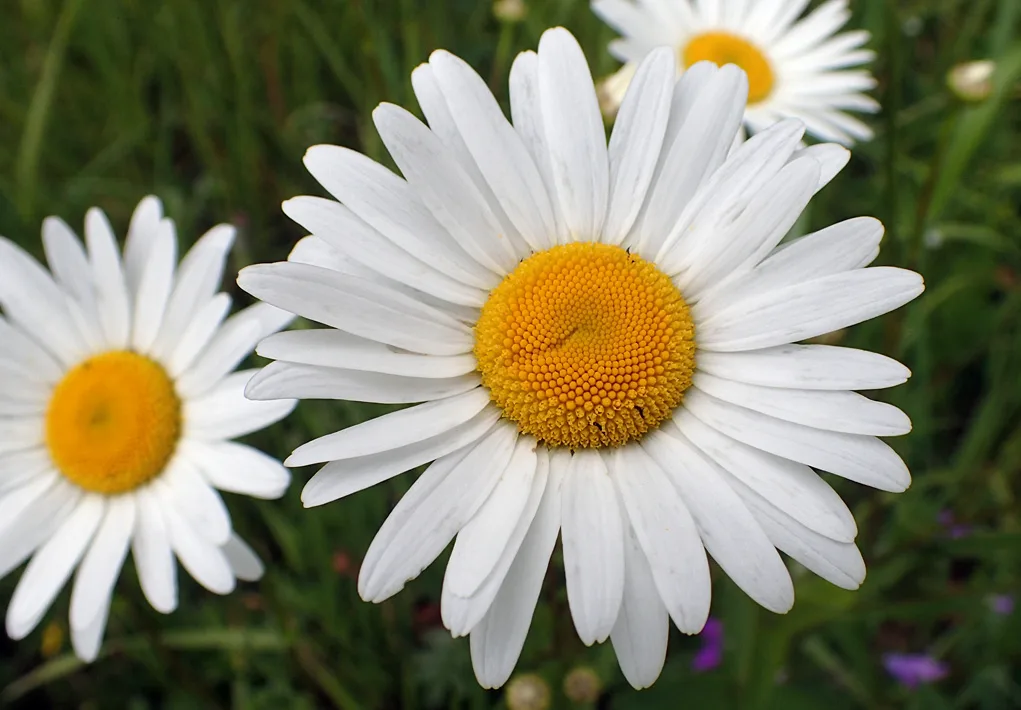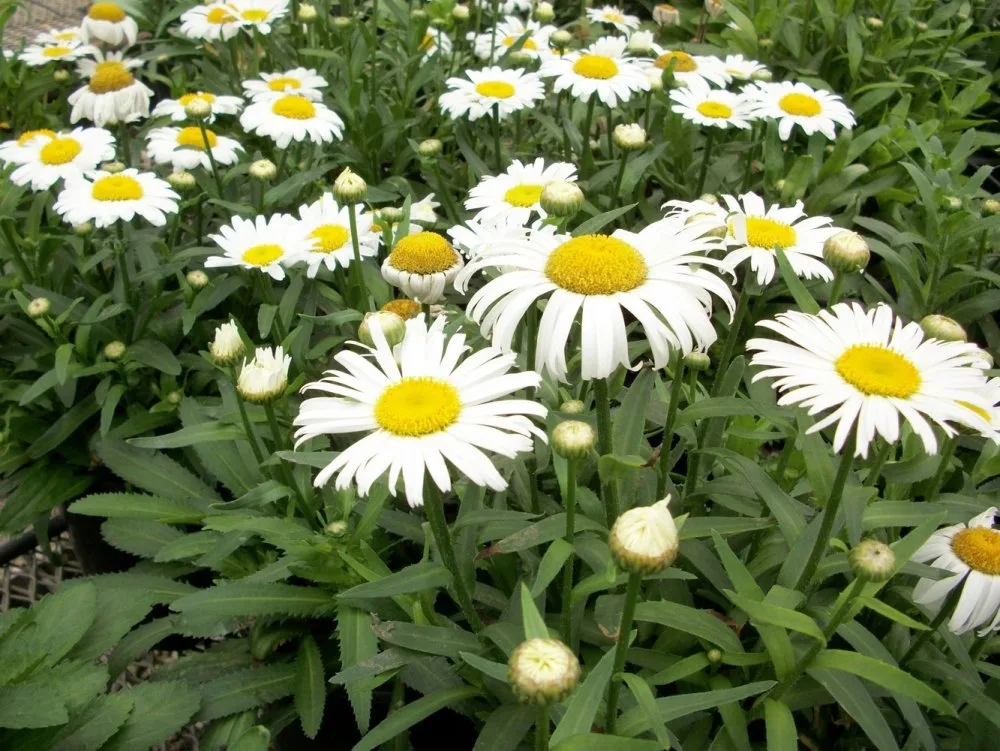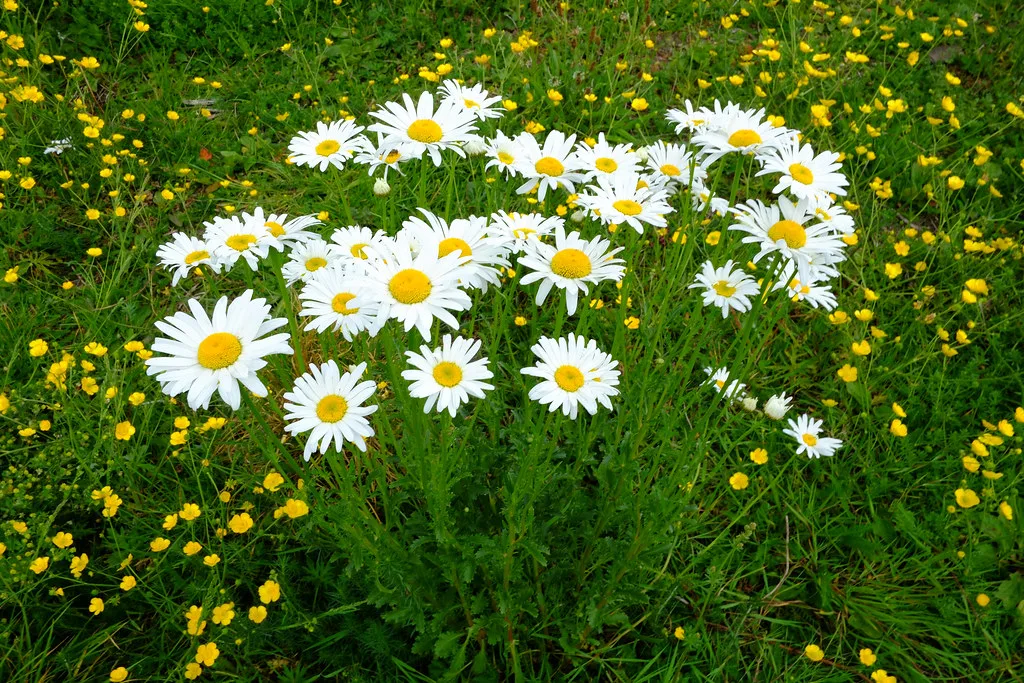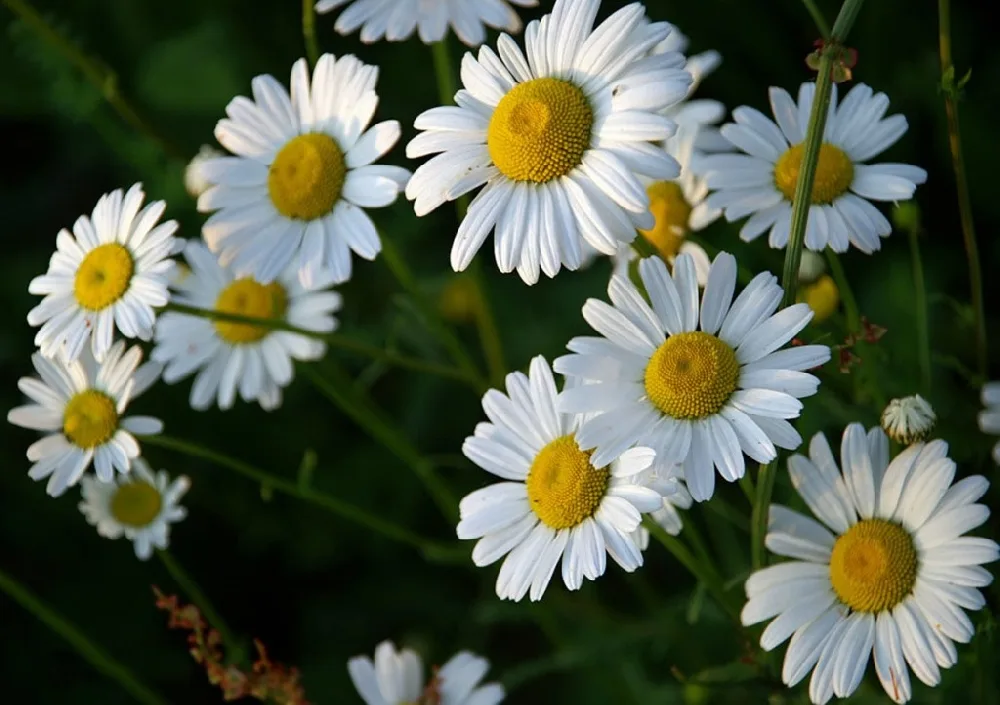Index
Introduction
Common daisy, scientifically known as Leucanthemum vulgare, is a perennial herbaceous plant native to Europe and Asia, belonging to the Asteraceae family. It is also popularly called common daisy or apple daisy. This plant is widely appreciated for its delicate beauty, with its white flowers and yellow centers, which attract pollinators such as bees and butterflies.
Meaning of the Marguerite Daisy flower
The name Marguerite Daisy evokes the traditional game of plucking the daisy’s petals while alternating between “love me” and “love me not“, a romantic game used to guess someone’s feelings. This association with love and luck makes the Marguerite Daisy a symbolic plant in many cultures, representing innocence, purity and divination.
| Common Name | Marguerite Daisy |
|---|---|
| Botanical Name | Leucanthemum vulgare |
| Family | Asteraceae |
| Plant Type | Herbaceous Perennial |
| Size Adult | 30 to 90 cm |
| Sun exposure | Full sun to half shade |
| Soil Type | Well-drained, Fertile |
| soil pH | Neutral to Slightly Acidic |
| Flowering Season | Spring to Summer |
| Flower Color | White with yellow center |
| Native Area | Europe and Asia |
| Toxicity | Non-toxic |

How to care for the Marguerite Daisy
Light: Marguerite Daisy blooms best in direct sunlight or partial light, ensuring at least 6 hours of light a day.
Soil: Prefer well-drained, fertile soil with a neutral to slightly acidic pH.
Water: Keep the soil evenly moist, but avoid waterlogging. Water regularly, especially during dry periods.
Temperature and humidity: This plant tolerates a variety of temperature conditions, but prefers temperate climates. Keep the humidity appropriate to the environment.
Fertilizing: Fertilize every 4 to 6 weeks during spring and summer with a balanced fertilizer. Avoid over-fertilizing to prevent growth problems.
How to make Marguerite Daisy Seedlings
1. Propagation by seed:
2. Propagation by clump division:
- Separate the cuttings from the mother plant, ensuring that each division has healthy roots and foliage.
- Plant the divisions in pots or in the ground.
How to plant:
- Choose a sunny or partially shaded spot.
- Prepare loose soil rich in organic matter.
- Dig a hole slightly larger than the plant’s root ball and plant the seedling, covering it with soil.
- Water well after planting and keep the soil moist until the plant is established.

Most Common Pests and Diseases
1. Aphids:
- Symptoms: Curled, yellowed leaves with sticky spots.
- Solution: Use natural insecticide or soapy water.
2. Mealybugs:
- Symptoms: White or grayish spots on leaves and stems.
- Solution: Remove by hand or apply neem oil.
3. Powdery mildew:
- Symptoms: White powdery spots on the leaves.
- Solution: Remove the affected parts and apply fungicide.
4. Root rot:
- Symptoms: Yellowing of the leaves and rotting of the roots.
- Solution: Reduce watering and replant in well-drained soil.
5. Fusarium wilt:
- Symptoms: Leaf wilting and yellowing.
- Solution: Remove infected plants and avoid excess humidity.

Curiosities and Myths
1. Origin of the name:
- Curiosity: The name “Marguerite Daisy” comes from the habit of plucking the petals of the flower while reciting the phrase “love me, love me not“.
2. Weather resistance:
- Curiosity: This flower is known for its resistance to adverse climates and is found in many regions of the world.
3. Myths about divination:
- Myth: It is believed that the number of petals on a Marguerite Daisy flower can predict a person’s love future.
- Reality: There is no scientific evidence to support this belief, but it is still a popular practice in many cultures.

Conclusion
In summary, caring for the Marguerite Daisy plant requires attention to detail, from choosing the right location to regular maintenance. With the right care, you can enjoy the beauty of these flowers in your garden or in pots indoors. What’s more, the curiosities and myths associated with this plant add an extra layer of interest and charm, making it even more special for those who grow it.
Therefore, by learning about the necessary care, exploring its curiosities and unraveling the myths, gardening lovers can deepen their connection with nature and make the most of the charming Marguerite Daisy flower’s presence in their environment.
Frequently Asked Questions
What is the name of the Marguerite Daisy flower?
The name of the Marguerite Daisy flower is “Leucanthemum vulgare”, a species of daisy common in many regions of the world.
What’s the point of the Marguerite Daisy?
Marguerite Daisy is often used in flower arrangements and gardening because of its aesthetic beauty. In addition, some people believe that the plant has medicinal properties, although there is no conclusive scientific evidence.
What’s the Marguerite Daisy?
The Marguerite Daisy plant, also known as Leucanthemum vulgare, is a perennial herb belonging to the Asteraceae family, known for its white and yellow flowers and bright green foliage. It is appreciated in ornamental gardens and landscaping.







